Effective use of cards for soliciting assistance to cross streets
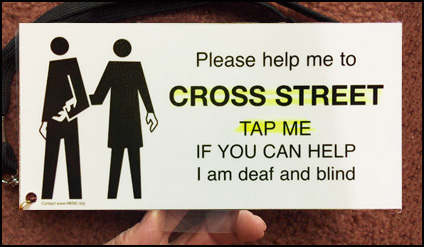
The street-crossing card*
pictured here incorporates all the principles of good card design including:
- listing the following information
in proper sequential order:
- purpose of the card (what the user wants);
- what the reader is asked to do ("tap me");
- the fact that the user is deaf and
blind;
- important information is enlarged and highlighted;
- an illustration shows the purpose of the
card for those who don't speak English or can't read.
The card is
laminated and has a tab centered at the bottom of the card so it can be held
without covering up the text (the tab handle is formed by extending the
lamination half an inch below the card and cutting off all but about 2" width in the
center). To be more visible, the card is large (8"x4") and is attached to a cord
that can be worn around the neck for easy access, since it is too large for a
pocket.
*Card was designed by Dr. Gene Bourquin, COMS, CI
& CT, CLVT at Helen Keller National Center for Deaf-Blind Youths and Adults.
Gene has studied the use of street-crossing cards for his dissertation -- for more information, click here or contact him at OandMHK@msn.com.
To get assistance to cross a street, the deaf-blind person
stands at the curb facing the street to be crossed, holding the street-crossing
card over the shoulder where it can be seen from behind as well as in front. In
order to be seen by people approaching from the side, the card can periodically
be turned and held at a 90 degree angle long enough to allow people to see and
read it (perhaps 30-40 seconds) -- turning the card quickly may help draw
attention to it.

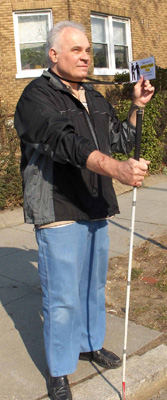
When tapped, the deaf-blind person points toward
the street that is desired to be crossed.
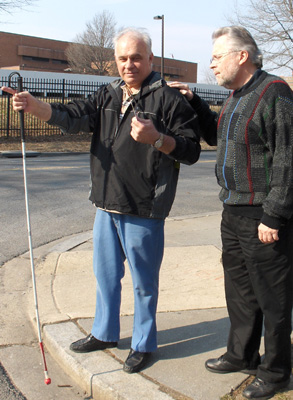
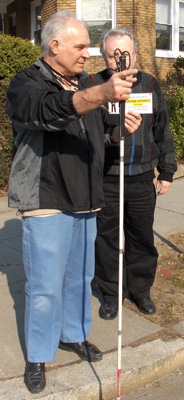
If the guide takes
the deaf-blind person's arm, the deaf-blind person uses the Hines break to
smoothly and politely take the arm of the guide.

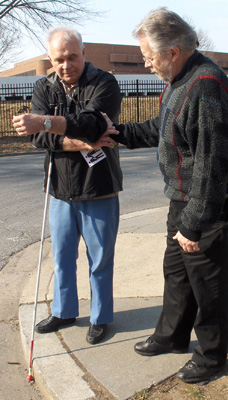
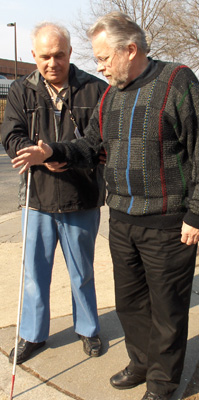
After the
deaf-blind person has the arm of the guide, they cross the
street.


Grateful appreciation to Arthur Roehrig and
Frederick Sauerburger for being photographed for these
illustrations.
Return to O&M for Deaf-Blind People
Return to home page










